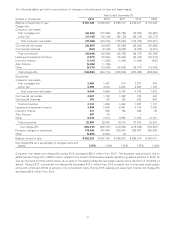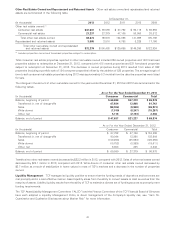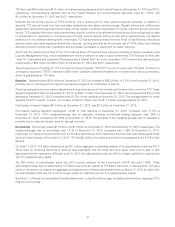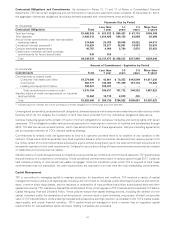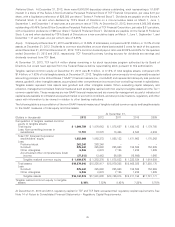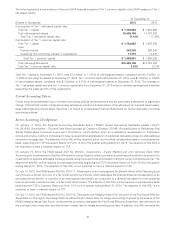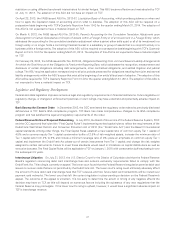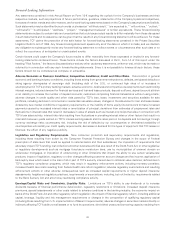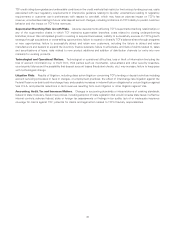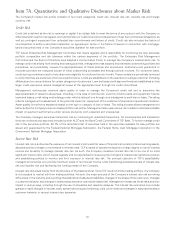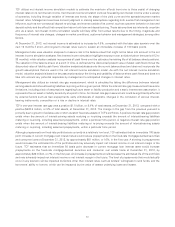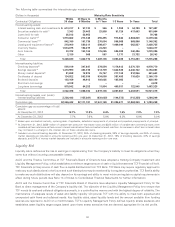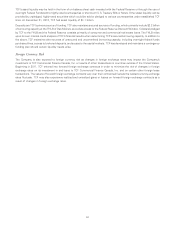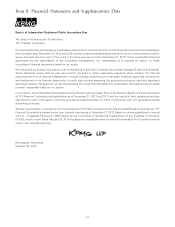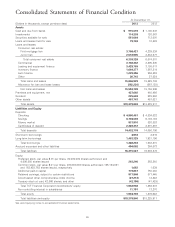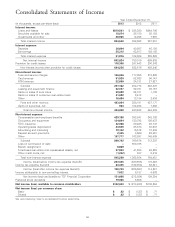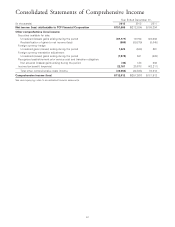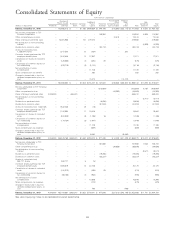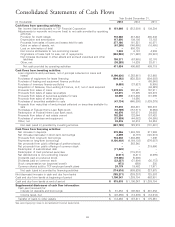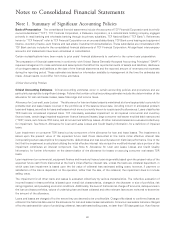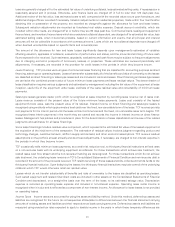TCF Bank 2013 Annual Report Download - page 67
Download and view the complete annual report
Please find page 67 of the 2013 TCF Bank annual report below. You can navigate through the pages in the report by either clicking on the pages listed below, or by using the keyword search tool below to find specific information within the annual report.TCF utilizes net interest income simulation models to estimate the near-term effects (next one to three years) of changing
interest rates on its net interest income. Net interest income simulation involves forecasting net interest income under a variety
of scenarios, including through variation of interest rate levels, the shape of the yield curve and the spreads between market
interest rates. Management exercises its best judgment in making assumptions regarding both events that management can
influence, such as non-contractual deposit re-pricings, and events outside of its control, such as customer behavior on loan and
deposit activity and the effect that competition has on both loan and deposit pricing. These assumptions are inherently uncertain
and, as a result, net interest income simulation results will likely differ from actual results due to the timing, magnitude and
frequency of interest rate changes, changes in market conditions, customer behavior and management strategies, among other
factors.
At December 31, 2013, net interest income is estimated to increase by 4.5%, compared with the base case scenario over the
next 12 months if short- and long-term interest rates were to sustain an immediate increase of 100 basis points.
Management also uses valuation analyses to measure risk in the balance sheet that might not be taken into account in the net
interest income simulation analyses. Net interest income simulation highlights exposure over a relatively short time period (12 to
36 months), while valuation analysis incorporates all cash flows over the estimated remaining life of all balance sheet positions.
The valuation of the balance sheet, at a point in time, is defined as the discounted present value of asset cash flows minus the
discounted value of liability cash flows. Valuation analysis addresses only the current balance sheet and does not incorporate the
growth assumptions that are used in the net interest income simulation model. As with the net interest income simulation
model, valuation analysis is based on key assumptions about the timing and variability of balance sheet cash flows and does not
take into account any potential responses by management to anticipated changes in interest rates.
Management also utilizes an interest rate gap measurement, which is calculated by taking the difference between interest-
earning assets and interest-bearing liabilities re-pricing within a given period. While the interest rate gap measurement has some
limitations, including a lack of assumptions regarding future asset or liability production and a static interest rate assumption, it
represents the net asset or liability sensitivity at a point in time. An interest rate gap measurement could be significantly affected
by external factors such as loan prepayments, early withdrawals of deposits, changes in the correlation of various interest-
bearing instruments, competition or a rise or decline in interest rates.
TCF’s one-year interest rate gap was a positive $1.5 billion, or 8.4% of total assets, at December 31, 2013, compared with a
positive $903.9 million, or 5% of total assets, at December 31, 2012. The change in the gap from the previous year-end is
primarily due to growth of variable-rate or short-duration fixed-rate assets in TCF’s portfolios. A positive interest rate gap position
exists when the amount of interest-earning assets maturing or re-pricing exceeds the amount of interest-bearing liabilities
maturing or re-pricing, including assumed prepayments, within a particular time period. A negative interest rate gap position
exists when the amount of interest-bearing liabilities maturing or re-pricing exceeds the amount of interest-earning assets
maturing or re-pricing, including assumed prepayments, within a particular time period.
Although prepayments on fixed-rate portfolios are currently at a relatively low level, TCF estimates that an immediate 100 basis
point increase in current mortgage loan interest rates would reduce prepayments on the fixed-rate mortgage-backed securities
and consumer loans at December 31, 2013, by approximately $51 million, or 16%, in the first year. A slowing in prepayments
would increase the estimated life of the portfolios and may adversely impact net interest income or net interest margin in the
future. TCF estimates that an immediate 50 basis point decrease in current mortgage loan interest rates would increase
prepayments on the fixed-rate mortgage-backed securities and consumer real estate loans at December 31, 2013, by
approximately $22 million, or 7%, in the first year. An increase in prepayments would decrease the estimated life of the portfolios
and may adversely impact net interest income or net interest margin in the future. The level of prepayments that would actually
occur in any scenario will be impacted by factors other than interest rates, such as lenders’ willingness to lend funds, and the
borrowers’ ability to borrow, which can be impacted by the value of assets underlying loans and leases.
51


